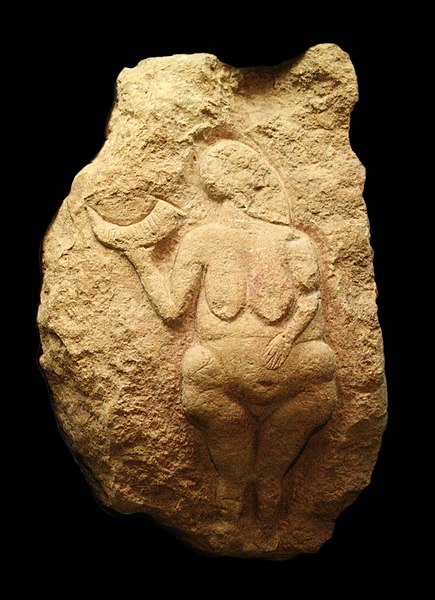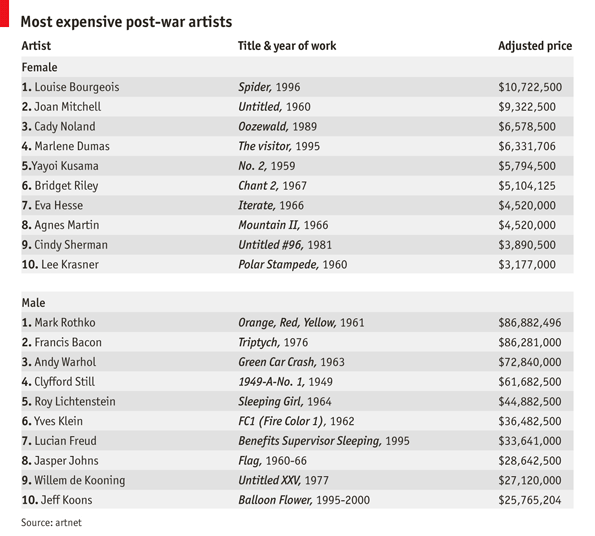Our ancestors were a lot smarter than we give them credit for.
 |
|
Megalithic stone in central Sulawesi. Photo courtesy of Oliver van Straaten
|
We think we know the history of art, and then something comes along to upset that narrative. For example, it’s long been accepted that the first figurative art (which means art that retains references to the real world) was made in Europe. Recent re-dating of cave art in Sulawesi, Indonesia has set that theory on its head—at least until something else is discovered.
Prehistoric cave art and megaliths in Sulawesi are not news. What’s changed is how old we think they are, based on more recent uranium-series dating. You can find the methodology here. However, what interests me is the shift in how young scientists see ancient man.
Too often, pop anthropology involves discussions of ancient man’s credulousness. In the 20th century, scientists seemed to buy wholly into the idea that intelligence is a modern trait; our lowbrow ancestors had no higher end thinking, except that they walked closely with the Otherworld.
 |
|
Lion-man of the Hohlenstein-Stadel is a prehistoric ivory sculpture discovered in a German cave in 1939. It’s about 40,000 years old. Photo courtesy of Dagmar Hollmann
|
All unexplained prehistoric behavior was thrown into the black hole of spiritualism. Once, a park ranger in Mesa Verde carefully explained that regularly-spaced drilled holes in the rock were religious in significance. My husband whispered to me that they looked like footings for a now-missing superstructure. Since they were in front of a cliff dwelling, that seemed clear, but when I suggested it, the expert brushed the idea away. In his mind, the ancestral Puebloans were incapable of that kind of engineering.
This NPR story does a good job of balancing that. “I think the overall theme here really is that we’ve vastly underestimated the capacity of our ancestors,” said Australian paleoanthropologist Genevieve von Petzinger.
Researchers Adam Brumm et alrecognize that the important part of their discovery has to do with ancient man’s abilities “for inventing, telling and consuming stories.” Because prehistoric man didn’t have written language, the best place to see their creative life is in narrative cave art. When we recognize the interactions between the characters in these paintings, we are reading their thoughts.
 |
|
Photostitched panorama showing a therianthrope hunting, from Leang Bulu’ Sipong in Indonesia. Photo courtesy F3News
|
Along with recognizable figures and obvious abstractions (dot, swirls, etc.) paleolithic cave art contains figures that anthropologists call therianthropes. We lay-people are more likely to call them shape-shifters. They are a clue to just how complex and intelligent prehistoric man was.
Therianthropes “arguably communicated narrative fiction of some kind,” wrote Brumm. The previous oldest-known example is from Germany, a figurine of a human with a feline head. It’s about 40,000 years old.
The limestone cave of Leang Bulu’ Sipong in Sulawesi portrays several of these shapeshifters hunting wild pigs and dwarf bovids. These are about 4,000 years older—hence the excitement. Because there are no humans doing the hunting, it’s a tantalizing version of early human fiction—one we don’t have the key to read.
Unsurprisingly, the paintings are deteriorating at a rapid rate. Merrit Kennedy projects another modern shibboleth when she suggests the culprit is climate change. The cave art at Lascaux degenerated rapidly after its discovery in 1940. Human visitation meant humidity changes, increased carbon dioxide levels, and rises in temperature from artificial lighting. These triggered infestations of a variety of molds, fungi, and bacteria, which eat into the limestone and required enormous intervention to ‘cure.’ The caves were closed to the public in 1963. And Lascaux is in the temperate Dordogne, whereas Sulawesi is an equatorial jungle-covered volcanic island.
A special thanks to Sandy Sibley for bringing this story to my attention.




.jpg/594px-Paintings_from_the_Chauvet_cave_(museum_replica).jpg)